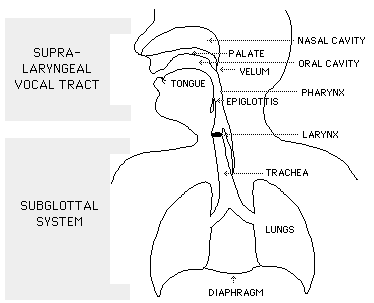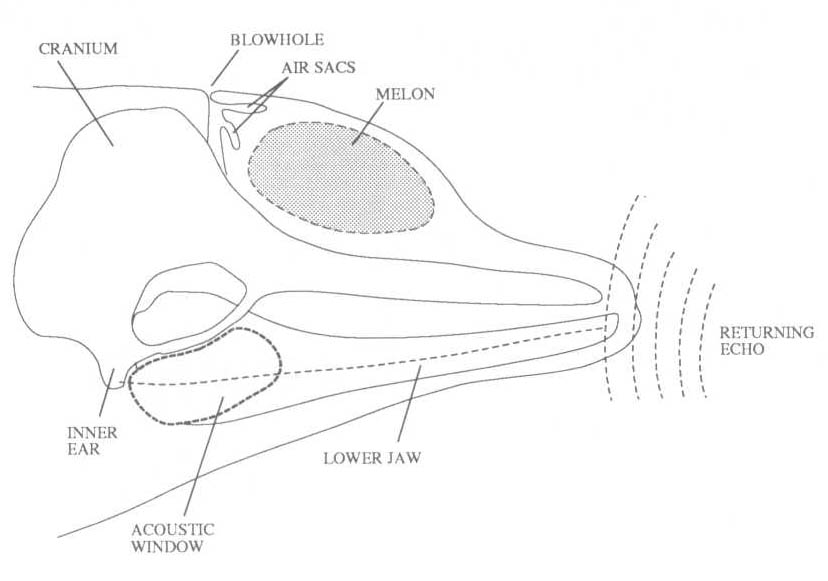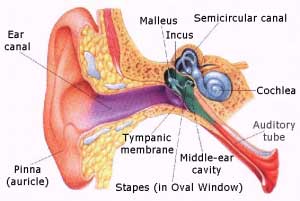
Human Sound Production

Dolphin Head
Mammals are distinct from other animals in three ways. Mammals grow hair, produce milk from mammary glands, and have middle ear bones.
The sounds produced by mammals range from infrasound to ultrasonic. Most mammals create sound using their larynx, and modify the sound by stretching or contracting the vocal chords, modifying the mouth, tongue, trunk (elephants), and others. Some marine mammals, like dolphins, create sound in their nasal sacs which is transmitted into the water through the melon.
 Human Sound Production |
 Dolphin Head |
Compared to the other classifications of animals, mammals possess the best hearing, in both frequency range and sensitivity. Mammals all hear in pretty much the same way. Some mammals like whales and sea lions do not have an outer ear opening, but there middle and inner ear are similar. The ear is comprised of three parts, the outer, middle, and inner ear. The outer ear collects sound and funnels it to the middle ear through the ear canal. In the middle ear contains the incus (anvil), malleus (hammer), and stapes (stirrup) which vibrate to transfer the sound into the inner ear. In the inner ear the cochlea converts the sound waves into electrical signals that are sent to the brain. For an animation and more information click here.

Human Ear
Orders of Mammals:
Even-toed ungulates; antelope, giraffe, camels, pigs, hippos, and others


Carnivores


Whales, dolphins, and porpoises


Bats
Flying lemurs
Hyraxes (a.k.a. dassies or conies)
Shrews, moles, hedgehogs, tenrecs, and others
Hares, pikas, and rabbits
Marsupials
Platypus and echidnas
Horses, rhinos, and tapirs

Pangolins (scaly anteaters)

Elephants


Rodents
Dugongs, manatees, and sea cows
Aardvarks
Edentates; sloths, armadillos, and anteaters